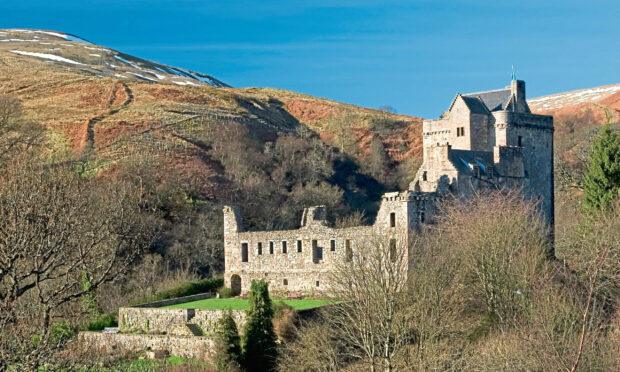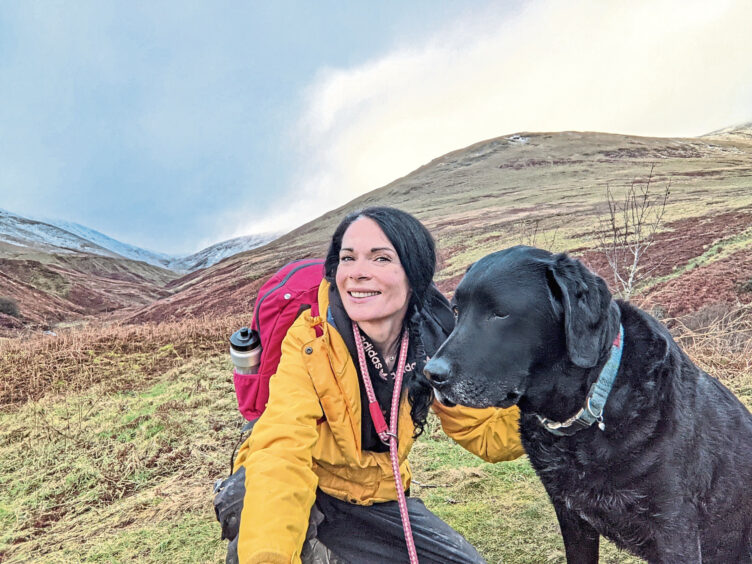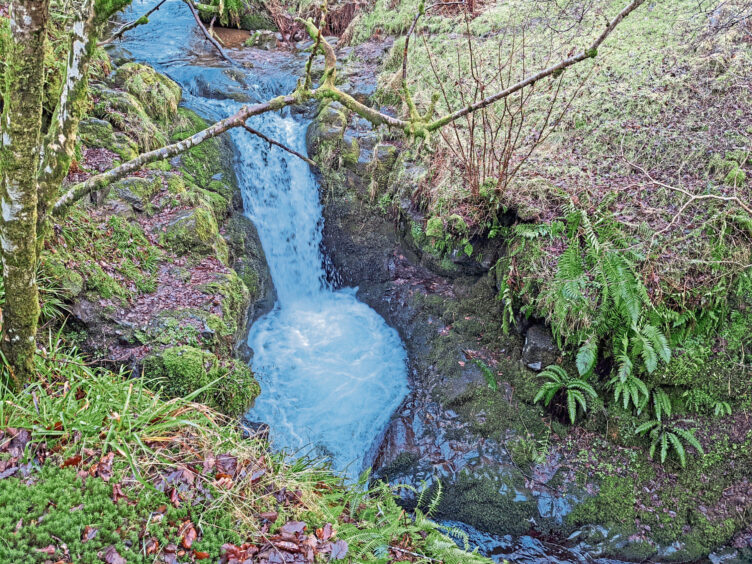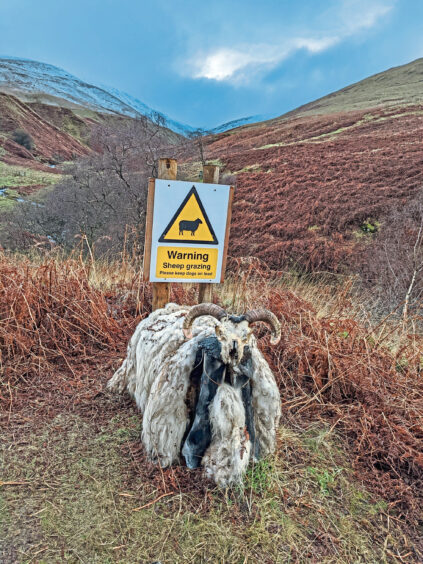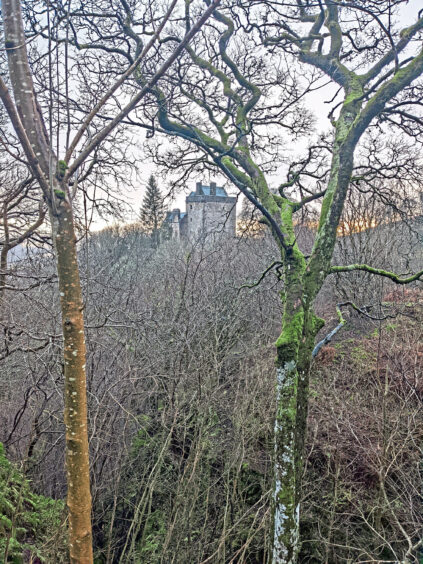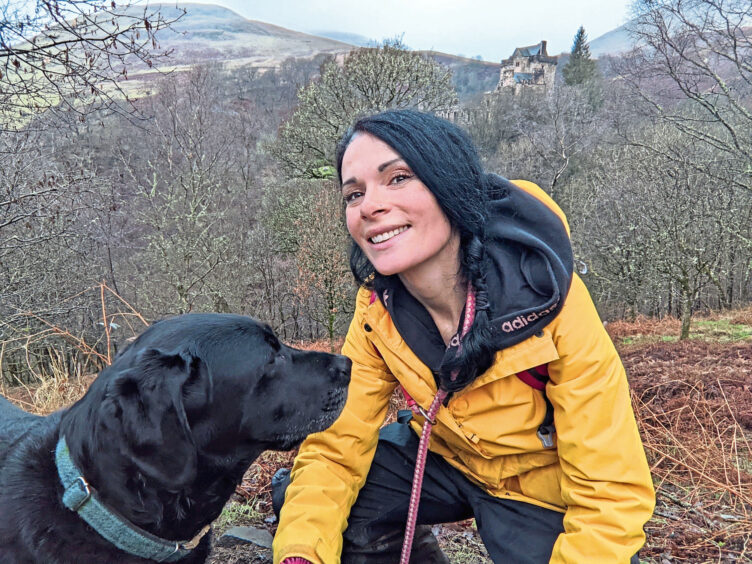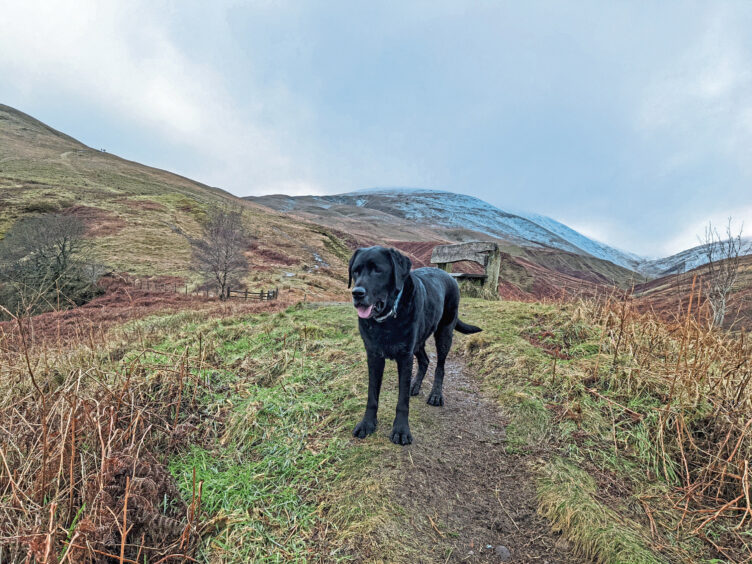Gayle explores Dollar Glen in Clackmannanshire and its dramatic 15th Century castle.
Towering over the steep gorges, tumbling burns and tree-lined slopes of Dollar Glen, Castle Campbell is an impressive, somewhat forbidding, sight.
Originally called Castle Gloom, the 15th Century fortress boasts the chasm of the Burn of Care on one side, and that of the Burn of Sorrow on the other.
It looks and sounds like something right out of a horror film, or a fantasy novel, depending on your perspective.
And yet Castle Campbell sits in what must surely be one of Scotland’s most spectacular locations, at the head of the glen, in magnificent isolation, and cloaked by the soft green and brown landscape of the rolling Ochil Hills.
Quirky features
While you can drive right up to the castle and park outside it, the best way to approach, in my opinion, is to climb up through the glen. It’s a steep walk, yes, but well worth it for the views and quirky wee features you’ll find along the way.
I left my car in the centre of Dollar and strolled along a riverside path, past Dollar Museum, and through a park with picnic benches.
There are a series of paths to choose from but I crossed a wooden bridge and headed left up through mixed woodlands, including ancient oak trees.
Some cracking vantage points show glimpses of the castle and the distant hills, and there are some curious wooden sculptures, some shaped like toadstools, with coins poked into them.
I stuffed a 20 pence into one, not quite knowing why. Perhaps it will bring me good luck…?
When I reached a junction of pathways, I decided to save my investigation of the castle, lower down the glen, for later.
Rushing burns
Instead, I headed up through the glen, pausing to gaze down at rushing burns, waterfalls and inviting plunge pools until I reached a gate at the top of a steep flight of steps.
Spotting what looked like a sheep lingering on the brow of the hill, I hung back, hoping not to scare the beast. I even made a noise to warn it of my approach.
When it didn’t move – at all – I was puzzled. “Hello, sheep! I’m coming!” I said. Nothing.
Edging closer, I realised it was not a living, breathing sheep, but some kind of weird ritualistic effigy – the skull and thick fleece of a sheep draped over some sort of framework. I was freaked out!
Was this the work of a local joker, or someone keen to ensure walkers keep dogs on leads? The fact there was a signpost in front of it warning of sheep grazing made me think the latter.
I decided not to progress far beyond the unsettling sheep and that I’d return to walk up 648m King’s Seat Hill another day, or to explore the series of faint tracks through the wilderness.
It’s an inviting landscape, and next time I’ll bring a picnic and plan a longer route.
Curious castle
Meandering back downhill, the castle turned out to be closed, thanks to coronavirus, but I’d been there in the past and found it highly fascinating and absolutely stunning, with its cobbled floors, terraced gardens and unusual two-arched loggia facing the courtyard.
The oldest part of the castle – which is managed by Historic Environment Scotland as a scheduled ancient monument – is a brilliantly-preserved 15th-Century tower around which other buildings have since been constructed, including the loggia.
It was the lowland seat of the earls and dukes of Argyll, chiefs of Clan Campbell, from the 15th to the 19th Century, and was visited by royalty and nobles including Mary, Queen of Scots, in the 16th Century.
When she stayed here in 1563, Mary was said to have been hugely impressed by the fortress and stated: “This reminds me of home.”
Meanwhile, John Knox, father of the Reformation in Scotland, visited several times.
There’s a rocky knoll in a corner of the terrace referred to locally as John Knox’s Pulpit, from where Knox, tradition has it, preached to a large crowd while staying at the castle.
Trees felled by recent storms meant that my return route was closed off, so I walked back down to Dollar on the quiet tarmac road to enjoy a change of scenery.
Wildlife
Whichever path, or road, you choose, there’s a wealth of flora and fauna to be discovered in the glen.
Like many others in the Ochils, with its gorges and steep flanks, it is well protected from prevailing westerlies and cold easterlies, and features a mild and moist micro-climate where specialised plants prosper.
The wildlife habitats and geology of Dollar Glen have made it a Site of Special Scientific Interest, with it being a nationally important location for lichens and ferns.
You might also spot green woodpeckers, dippers and nuthatches, which are three of the many species of birds that live in the enchanting woodland gorges.
